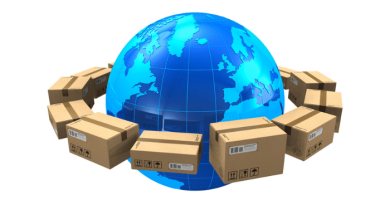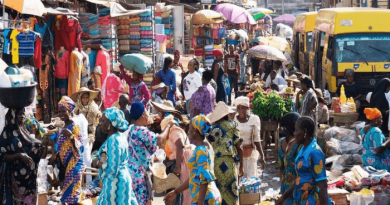We’re meeting only about 10% of market potential – Moor
Sheila Moor, founder of Fresh Fare, is tackling one of agriculture’s toughest challenges, post-harvest losses. In just two years, her company has begun transforming cold-chain logistics for vegetables, fruits, and poultry, creating shared value for smallholder farmers in Northern Nigeria, investors, and the wider ecosystem. She shares her journey with Stephen Onyekwelu. Excerpts.
You’ve painted a futuristic picture of an efficient, tech-driven agri-supply chain across Africa. What was the “aha” moment that led to Fresh Fare, and how much of that original vision is now operational reality?
The “aha” moment behind Fresh Fare Limited likely came from witnessing firsthand the staggering amount of food loss between Nigerian farms and markets — often as much as 40% — due to outdated logistics, lack of cold storage, and fragmented supply chains. I am from Benue State, the food basket of the nation so I have seen post harvest loss all my life.
Imagine a farmer harvesting fresh tomatoes in rural Benue or Plateau Nigeria, only for most of them to spoil before reaching consumers just a few hours away. The disconnect between food abundance at the source and scarcity in urban centres sparked a realisation: what if technology could bridge that gap, making the journey from farm to table smarter, faster, and more reliable?
The vision was bold: a continent-wide, tech-enabled supply chain that uses cold chain solutions to move produce from point A to B, Provide cold storage infrastructure while creating a ready market for small holder farmers for their fresh farm produce.
As for operational reality — much of that vision is now in motion, though at different stages across regions.
Walk us through the full Fresh Fare value chain, from sourcing to final delivery. Where do you see the most friction, and where do you have the tightest control?
Fresh Fare’s value chain starts right at the farm. We work directly with smallholder farmers, helping them grow the right crops, meet quality standards, and get ready for market. Once their produce is ready, we collect it from nearby aggregation points — kind of like mini collection hubs close to their farms or in the general farmers markets.
From there, we move the goods into cold storage — these are solar-powered units that keep fruits and vegetables fresh. Then we handle transportation (last mile logistics) getting the produce to city markets, supermarkets, restaurants, or even straight to customers’ doors,using our mini cold chain delivery vehicles.
The biggest challenges would be transportation in urban cities, the traffic and high cost of fuel are hurdles we jump everyday *laughs*
On the upside we have a good grip on temperature monitoring in the cold chain assets for optimal temperature control.
What does partnership with a smallholder farmer look like at Fresh Fare, from onboarding, training, and production support to payment and retention? How many farmers do you currently work with, and across which regions?
At Fresh Fare Limited, partnership with smallholder farmers is at the heart of our mission to reduce post-harvest losses and enhance income stability through a robust cold chain and logistics network. Here’s what that partnership looks like:
We identify smallholder farmers through cooperatives. Each farmer is registered into our database, capturing key details such as location, crops grown, seasonal production estimates, and farm size.
Then there is training on post harvest protocols, market demand etc up to the point where the produce is harvested and aggregated and paid for in full by Fresh Fare.
We currently have a network of about 30+ farmers in Northern Nigeria and the number is growing..
You emphasise cold-chain logistics and tech-powered freshness. Can you break down the tech stack powering your operations, hardware, software, monitoring, and traceability?
Absolutely. At Fresh Fare Limited, our tech stack is designed to preserve the quality of perishable produce from farm to fork, ensuring minimal loss, transparency, and efficiency at every stage. Here’s a detailed breakdown of the technology ecosystem powering our cold-chain logistics and freshness:
● Solar Cold Rooms: Located at key hubs to preserve produce off-grid.
● Mini Cold Trucks: Refrigerated vehicles for last-mile delivery.
● Smart Sensors: Track temperature and humidity in real time.
● GPS Trackers: Monitor truck movement and delivery times.
Read also: From Benue to the world: Sheila Moor’s cold chain crusade to end food waste
Your platform has an e-commerce angle. How is your online marketplace structured: is it B2B, B2C, or hybrid? What payment, logistics, and customer support systems do you have in place to make the experience seamless?
Great question. At Fresh Fare, our online marketplace is structured as a hybrid platform, primarily B2B, with tailored B2C channels for urban retail customers.
For Payment we simply use Bank Transfers or Bank Cards for easy access. We use WhatsApp and our Fresh Fare hot line for customer feedback and support.
This marketplace ensures a seamless, buying experience while keeping quality, freshness, and traceability central.
What’s your current operational capacity in terms of volume handled per week or month? And how does that compare to the unmet demand or full market potential you’re targeting?
We currently move around 10-20 metric tonnes of fresh produce every month, Our cold-chain infrastructure ensures the produce stays fresh from farm to market, mainly serving our B2B customers.
But that’s just a fraction of the demand. We’re meeting only about 10% of the market potential in the regions we serve, which means there’s a massive opportunity to scale.
What’s the current size of the addressable market Fresh Fare operates in, across vegetables, poultry, and beyond? Where do you see the most scalable opportunity in the next 3–5 years?
In Nigeria, the addressable market for fresh produce, poultry, and perishables is worth over ₦5 trillion (roughly $3–4 billion) annually, driven by rising urban demand, a young population, and growing interest in food safety and traceability.
Fresh vegetables remain our core entry point, but poultry and value-added products, like pre-packaged produce and ready-to-cook items – are fast-growing segments with strong demand.
Over the next 3–5 years, the most scalable opportunity lies in strengthening cold chain coverage across more states in Nigeria.
The last mile is where many good ideas die. How is Fresh Fare managing last-mile delivery in urban and peri-urban markets, and what’s your solution for rural and hard-to-reach areas?
You’re right, the last mile can make or break the value chain. At Fresh Fare, we’ve built a flexible last-mile delivery model that adapts to both urban and rural realities.
In urban and peri-urban markets, we use our fleet of mini cold trucks and trained riders to deliver directly to retailers, restaurants, and homes. Orders are dispatched strategically to retain freshness and beat time.
For rural and hard-to-reach areas, our approach is hub-and-spoke: we already have a Partner ( ColdHubs Limited) with solar-powered cold rooms near farming clusters, so we use smaller vehicles or motorbikes to move produce to the nearest aggregation hub. This ensures quality is preserved before it enters the main cold chain.
It’s about meeting farmers and customers where they are—without compromising on freshness.
Cold-chain infrastructure in Africa is often cited as costly and unreliable. How is Fresh Fare financing and maintaining its refrigerated fleet and storage units, and what’s your biggest bottleneck?
Cold-chain infrastructure is expensive, no doubt, but it’s also essential. At Fresh Fare, we use a mix of strategies to finance and sustain our refrigerated fleet and cold storage. We’ve secured blended financing, debt financing, and partnerships with other organisations, we also lease our mini trucks to businesses that need last mile support.
Our biggest bottleneck? High upfront costs for quality cold equipment. But by using solar solutions and shared infrastructure thanks to Cold hubs Limited, we’re reducing those barriers, and proving that cold-chain can work sustainably in Africa.
Fresh Fare is currently powered by a team of 15 people across logistics, technology, operations, and farmer engagement. This includes cold-chain drivers, field officers, market ops staff, tech support, public relations and marketing, and our core leadership team.
We are a startup so we are keeping our team as lean as possible for now.
We prioritise talent that’s mission-driven, adaptable, and tech-savvy, people who understand the realities of working in both rural fields and fast-paced urban markets. Many of our team members come from backgrounds in agriculture, logistics, and startup operations.
To build a strong culture, we stay rooted in our mission: reducing food loss and building fairer markets for farmers. We invest in field immersion, team learning days, and open communication so that everyone, from the driver to the business developer, understands the role they play in making food systems more efficient. Innovation starts with empathy, and that’s how we lead.





